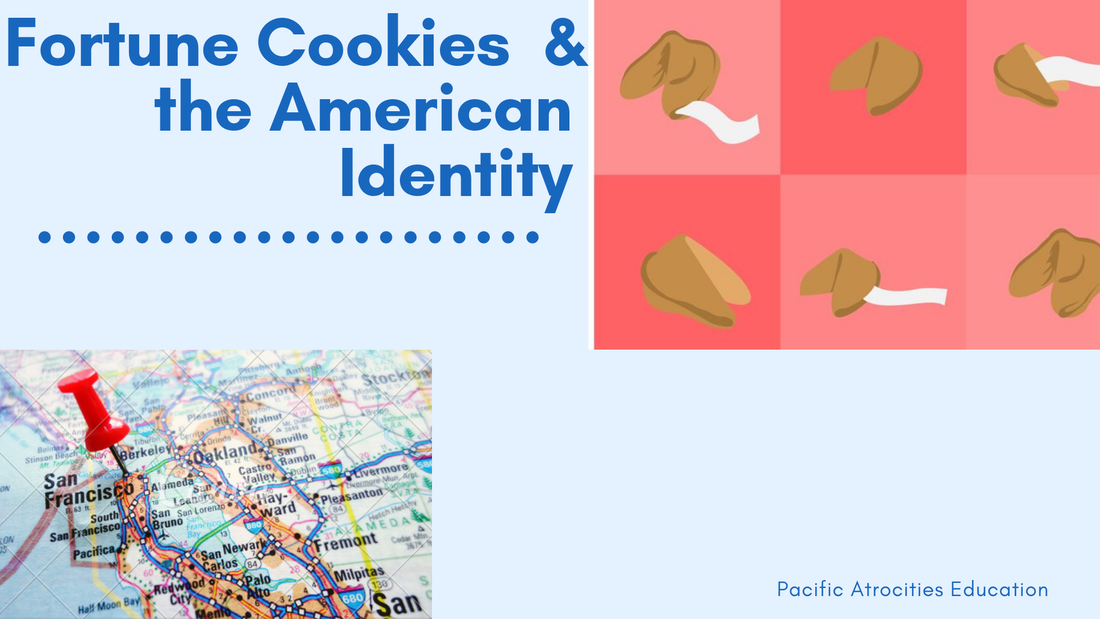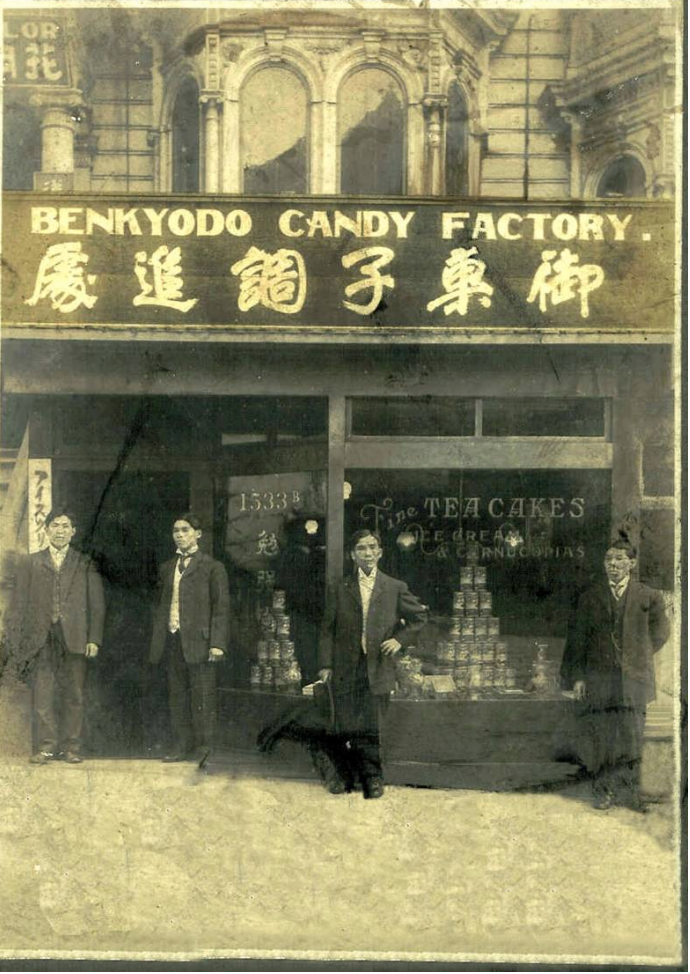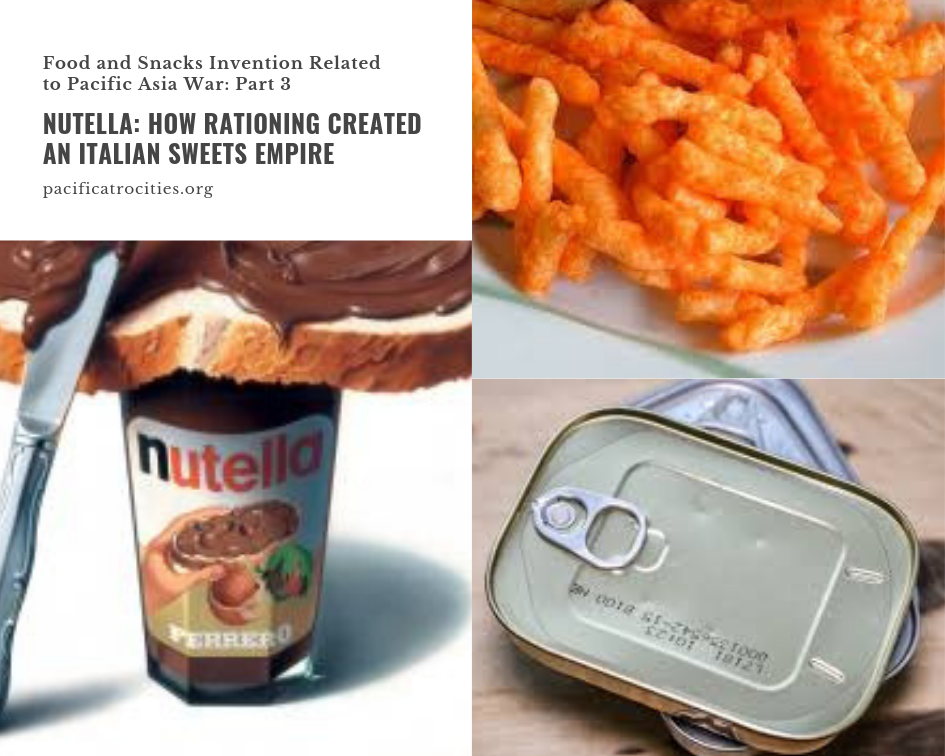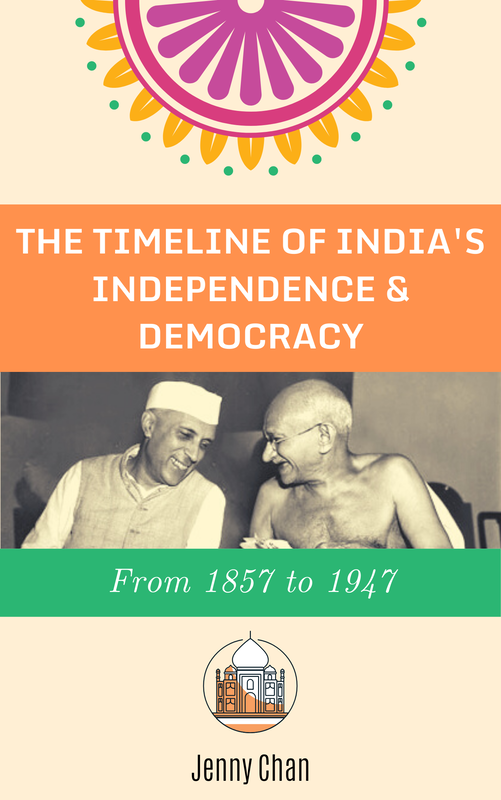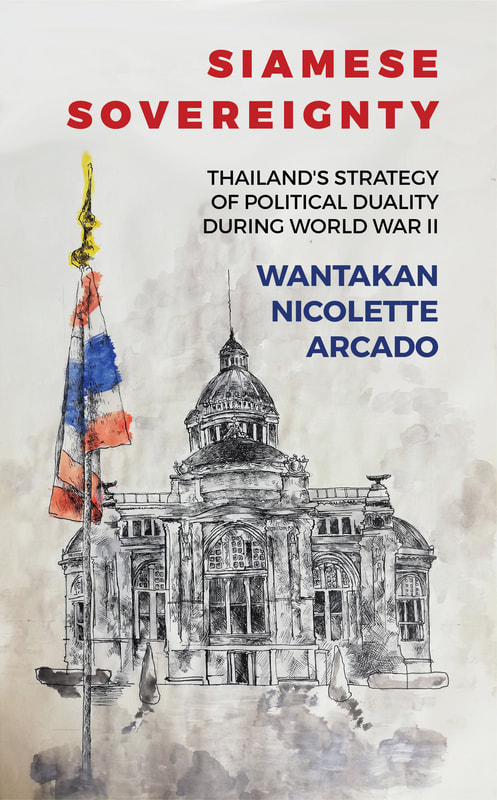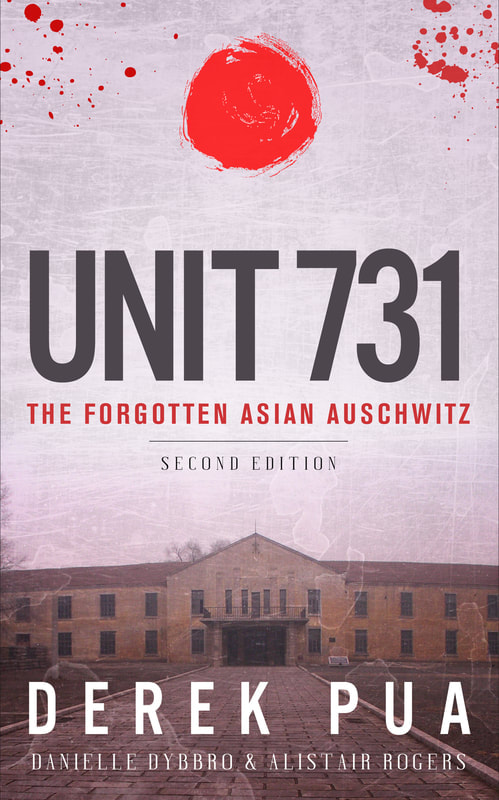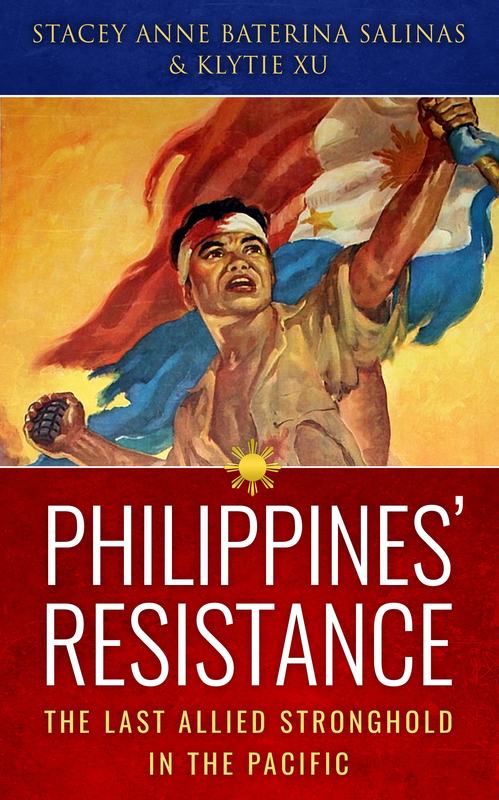|
by Hanna Bobrowicz The fortune cookie factory in San Francisco's Chinatown is often characterized as an emblem of the past-the last of its kind. Located in a crowded alleyway, tourists gather to see the meticulous folding of the tiny cookie, over and over again. (continued) The repetition, the machinery all provide an allure of the past. The fortune cookie factory continues to be a symbol of Chinatown, Chinese-American food and Chinese culture, despite decades-old research complicating the narrative of the fortune cookie by introducing its Japanese origins. In the last ten years, a movement of cultural authenticity has persistently questioned America’s ‘melting pot’ ideology by unveiling the often uncomfortable history of the treatment of Asian immigrants in the United States. Fortune cookies carry such a history, with their origins connected to the Chinese exclusion act of 1882 and the internment of Japanese Americans in the Second World War. It is with a renewed cultural specificity, that the merging of Japanese-Chinese cultures within the fortune cookie must be reexamined. Is the fortune cookie an example of the melting pot in it’s best form? The fortune cookie was first re-assessed with the 2008 publication of Jennifer Lee’s The Fortune Cookie Chronicles, a book that discusses the cultural and social impacts of American Chinese cuisine. In her analysis, Lee utilizes the research Yasuko Nakamachi published which situated the origins of the fortune cookie in Kyoto, Japan. These two publications encouraged a flurry of articles all of which analyzed the multicultural roots of the fortune cookie. Yet, when standing outside the Fortune Cookie factory or going to the Japanese tea garden, little has changed in explaining this fusion of cultures into one cookie. The history of the fortune cookie is linked to the Asian immigrant experience in the United States. With the 1882 Chinese Exclusion Act (the only law in US history to explicitly forbid a specific group of people to immigrate) those Chinese immigrants already living in San Francisco had to adapt to a non-threatening position in society. Lee explains that the act coordinates to the opening of Chinese laundries and restaurants, “cleaning and cooking were both women’s work, they were not threatening to white laborers.” Similar behavior was adopted by Japanese immigrants when they arrived in San Francisco. They often worked in Chinese restaurants and somewhere along the way introduced the fortune cookie to Chinese-American cuisine. It was then that Japanese bakeries like Benkyodo and Fugetsue began to manufacture the cookie on a mass scale. Yet the Japanese influence on the fortune cookie deteriorated after President Roosevelt issued order 9066 and interned all citizens of Japanese descent 1942 following the Pearl Harbor attack. It was under these circumstances that many Chinese Americans began to incorporate and manufacture their own fortune cookies. The cultural integration of Japanese-Chinese cultures in the creation of the fortune cookie was not a consenting collaboration of ideas, but rather due to the oppressive circumstances in which they lived. By facing discrimination and attempting to integrate into non-threating roles in American society both the fortune cookie and Chinese American cuisine flourished. But should the oppressive conditions or the multi-cultural persistence be remembered? Lee concluded that ‘the Japanese invented them, the Chinese popularized them, but the Americans ultimately consumed them.’ Whereas, Makoto Hagiwara’s great great grandson, Doug Dawkins, and owner of the Japanese Tea Garden, stated that ‘the fortune cookie wouldn’t have taken off if it hadn’t been popularized in such a wide venue.” In 2008 the consensus was to let this ugly history remain in the past and to instead celebrate the survival of the cookie. Where does the fortune cookie fit in 2019? An age where history is being re-examined, hidden and uncomfortable truths are being spoken about on a national level-yet fortune cookie continue to be consumed, its history unquestioned. American culture is at a crossroads of transformation, the idealistic ‘melting pot’ is being problematized revealing an enlightened and socially conscious population. Therefore, Lee’s publication in 2008 was just the beginning of a larger and more extensive social discussion on race and cultural traditions in America. It is this thought that Dawkins closing remarks remain relevant, ‘new cultures arise from old cultures in combinations.’ Despite the unfortunate history of this cultural merging, the fortune cookie represents America's past and future. Despite the cookie’s links to racial discrimination and exclusion, the Japanese and Chinese immigrants came to the United States and created an American hybrid. Therefore the fortune cookie represents a uniquely American evolution; by attempting to blend into American society, a new culture was created, unique to the Asian immigration experience. The fortune cookie continues to be served in both the Fortune Cookie Factory in Chinatown and the Japanese Tea Garden, representing the cookies story, complexities and all. References:
Related ArticlesRead and Learn More!
4 Comments
3/13/2024 06:46:39 pm
Your writing style is also fantastic! It kept me hooked from beginning to end. It's clear you put a lot of thought and effort into it, and it definitely shows. I'm definitely going to be sharing this with my friends and family.
Reply
Leave a Reply. |
- Home
- Stories
-
Internship
- Summer 2024 Internship
- Summer 2023 Internship
- Fall 2022 Internship
- Summer 2022 Internship
- Summer 2021 Internship
- Fall 2020- Spring 2021 Internship
- Summer 2020 Internship
- Fall 2019 Internship
- Summer 2019 Internship >
- School Year 2018-2019 Internship
- Summer 2018 Internship >
- Fall 2017 Internship
- Summer 2017 Internship >
- Books
- Archives
-
Resource Page
-
Supplementary Research Guides
>
- Unit 731 - Guide >
-
Philippines' Resistance - Guide
>
- Philippines World War II Timeline
- The Japanese Invasion & Conquest of the Philippines
- Bataan Death March
- Formation of Underground Philippines Resistance
- Supplies of the Guerrilla Fighters
- The Hukbalahap
- Hunter's ROTC
- Marking's Guerrillas
- United States Army Forces in the Philippines of Northern Luzon (USAFIP-NL)
- The Aetas
- Chinese and Filipino-Chinese Nationalist Guerrilla Units
- The Female Faces of the Philippine Guerrillas
- Rising Sun Flag - Guide >
- Pinay Guerrilleras - Guide >
- Fall of Singapore - Guide >
- Three Years and Eight Months - Guide >
- Siamese Sovereignty - Guide >
- The Khabarovsk War Crimes Trial - Guide >
- Unit 731 Cover-up : The Operation Paperclip of the East - Guide >
- Marutas of Unit 731 - Guide >
- Prince Konoe Memoir - Guide >
- Competing Empires in Burma - Guide >
- Battle of Shanghai - Guide >
- Ishi Shiro - Guide >
- Taiwan The Israel of the East - Guide >
- Seeking Justice for Biological Warfare Victims of Unit 731 - Guide >
- Rice and Revolution - Guide >
- Clash of Empires - Guide >
-
Hunger for Power and Self-SufficiencyI - Guide
>
- The Influence of War Rations on Post-War Culinary Transformations
- How World War II Complicated Food Scarcity and Invention
- American Military Innovations
- Government-Sponsored Food Inventions in Europe during World War II
- Feeding the Army: The Adaptation of Japanese Military Cuisine and Its Impact on the Philippines
- Mixed Dishes: Culinary Innovations Driven by Necessity and Food Scarcity
-
Denial A Quick Look of History of Comfort Women and Present Days’ Complication - Guide
>
- The Comfort Women System and the Fight for Recognition
- The Role of Activism and International Pressure
- The Controversy over Japanese History Textbooks
- The Sonyŏsang Statue and the Symbolism of Public Memorials
- Activism and Support from Japanese Citizens
- The Future of Comfort Women Memorials and Education
- Echoes of Empire: The Power of Japanese Propaganda - Guide >
- Lesson Plans >
-
Supplementary Research Guides
>
|
Pacific Atrocities Education
730 Commercial Street San Francisco, CA 94108 415-988-9889 |
Copyright © 2021 Pacific Atrocities Education.
We are a registered 501 (c)(3) charity. |
- Home
- Stories
-
Internship
- Summer 2024 Internship
- Summer 2023 Internship
- Fall 2022 Internship
- Summer 2022 Internship
- Summer 2021 Internship
- Fall 2020- Spring 2021 Internship
- Summer 2020 Internship
- Fall 2019 Internship
- Summer 2019 Internship >
- School Year 2018-2019 Internship
- Summer 2018 Internship >
- Fall 2017 Internship
- Summer 2017 Internship >
- Books
- Archives
-
Resource Page
-
Supplementary Research Guides
>
- Unit 731 - Guide >
-
Philippines' Resistance - Guide
>
- Philippines World War II Timeline
- The Japanese Invasion & Conquest of the Philippines
- Bataan Death March
- Formation of Underground Philippines Resistance
- Supplies of the Guerrilla Fighters
- The Hukbalahap
- Hunter's ROTC
- Marking's Guerrillas
- United States Army Forces in the Philippines of Northern Luzon (USAFIP-NL)
- The Aetas
- Chinese and Filipino-Chinese Nationalist Guerrilla Units
- The Female Faces of the Philippine Guerrillas
- Rising Sun Flag - Guide >
- Pinay Guerrilleras - Guide >
- Fall of Singapore - Guide >
- Three Years and Eight Months - Guide >
- Siamese Sovereignty - Guide >
- The Khabarovsk War Crimes Trial - Guide >
- Unit 731 Cover-up : The Operation Paperclip of the East - Guide >
- Marutas of Unit 731 - Guide >
- Prince Konoe Memoir - Guide >
- Competing Empires in Burma - Guide >
- Battle of Shanghai - Guide >
- Ishi Shiro - Guide >
- Taiwan The Israel of the East - Guide >
- Seeking Justice for Biological Warfare Victims of Unit 731 - Guide >
- Rice and Revolution - Guide >
- Clash of Empires - Guide >
-
Hunger for Power and Self-SufficiencyI - Guide
>
- The Influence of War Rations on Post-War Culinary Transformations
- How World War II Complicated Food Scarcity and Invention
- American Military Innovations
- Government-Sponsored Food Inventions in Europe during World War II
- Feeding the Army: The Adaptation of Japanese Military Cuisine and Its Impact on the Philippines
- Mixed Dishes: Culinary Innovations Driven by Necessity and Food Scarcity
-
Denial A Quick Look of History of Comfort Women and Present Days’ Complication - Guide
>
- The Comfort Women System and the Fight for Recognition
- The Role of Activism and International Pressure
- The Controversy over Japanese History Textbooks
- The Sonyŏsang Statue and the Symbolism of Public Memorials
- Activism and Support from Japanese Citizens
- The Future of Comfort Women Memorials and Education
- Echoes of Empire: The Power of Japanese Propaganda - Guide >
- Lesson Plans >
-
Supplementary Research Guides
>
